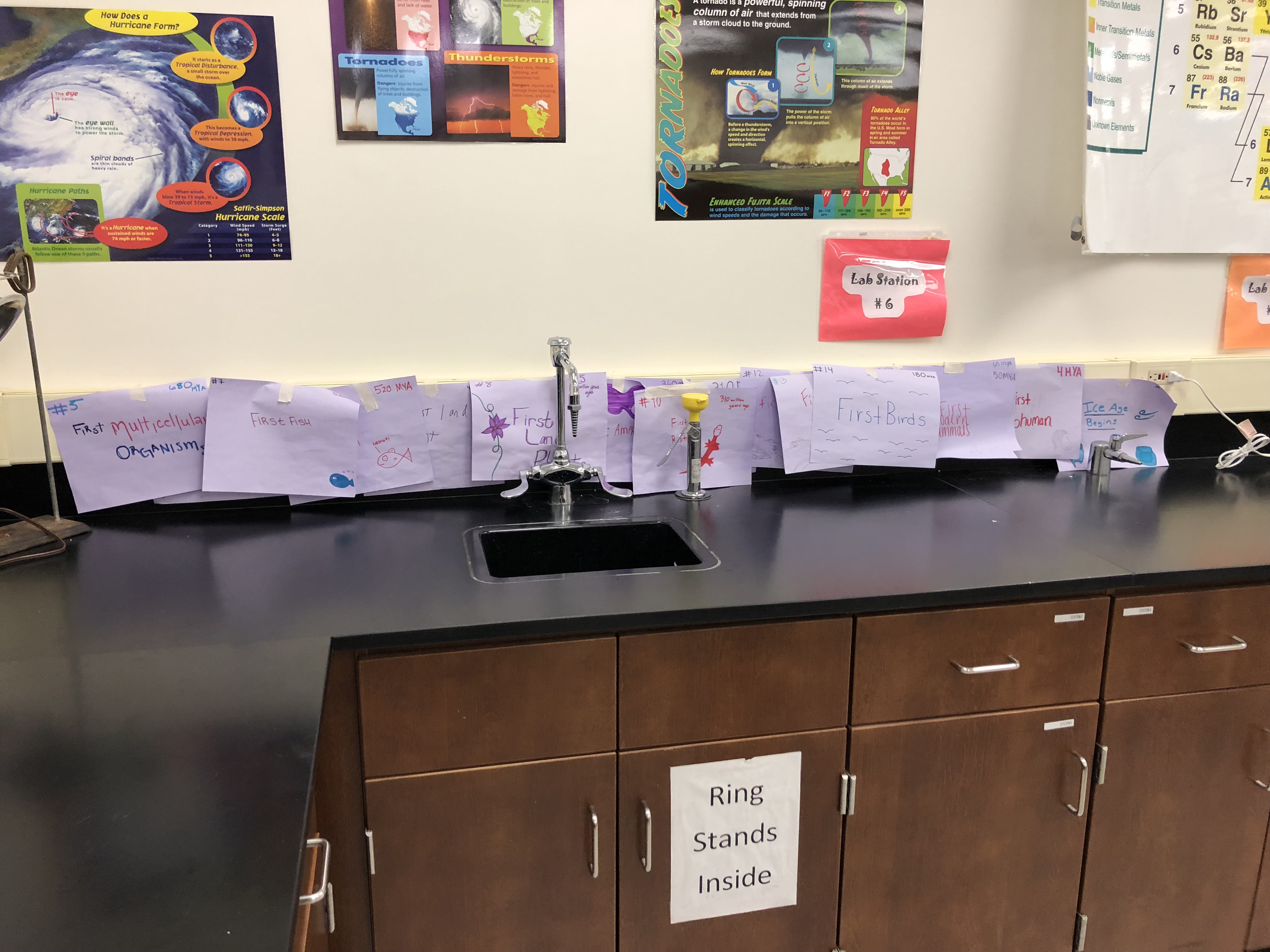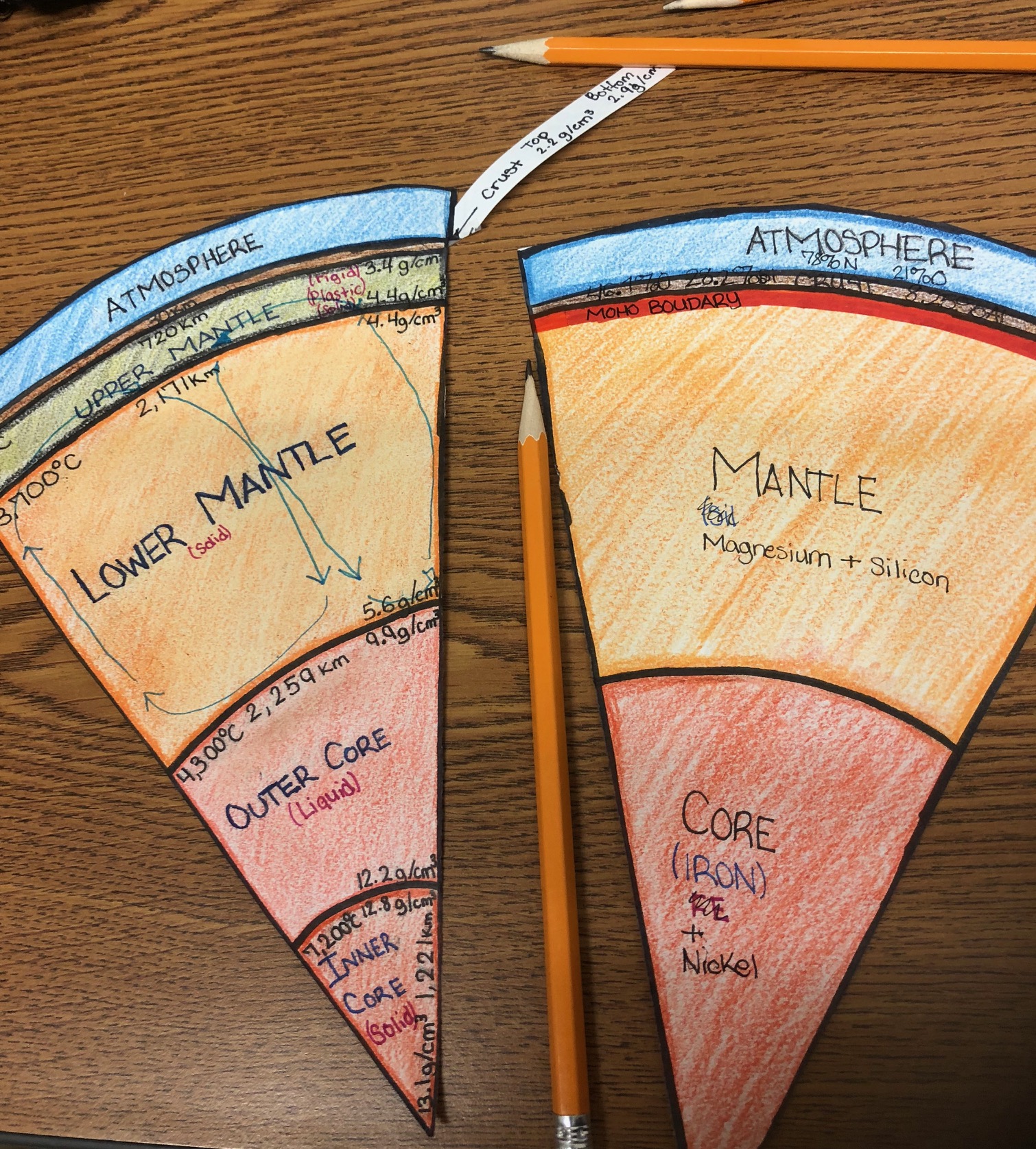Great visual aids from geology workshop
Dana Ukleja of Shaker Heights High School found the Ohio Oil and Gas Energy Education Program's Geology workshop to be quite helpful in her geology class. Ukleja said, "I teach high school geology to students in grades 11 and 12 so I was able to easily incorporate many of the activities from the workshop into my classroom this year."
The 50 meter geological timeline activity allowed students to gain a better understanding of the geologic time scale. Students and adults often have difficulty comprehending the length of time that has passed since our planet was formed, and this activity helped the students put this time scale into perspective by associating it with their current understanding of time.
Ukleja gave each student 1-2 events and times and requested that they make their own signs with an image (drawing, sketch) that supported their event. Once students had completed their signs, they lined up in chronological order to discuss the sequence of events. Next, students placed their events in the proper location/time labeled around the classroom. Ukleja said the students really enjoyed showcasing their artistic talents.

Once they started hanging them in the proper location they realized how “crowded” that portion of geological history was, seeing all of the other events that were so close in space and in the time sequence. Ukleja was able to refer back to this activity in several subsequent lessons and students could reflect back on their creation of this timeline and identify how it related to additional topics. She said, "The students seemed to enjoy this activity and I will definitely be doing this activity again with future classes!"
The Scaling Out Earth's Layers activity falls into the Structure of the Earth science standard which includes the sub-standards of the asthenosphere, lithosphere, Mohorovicic boundary, compositions, thermal energy transfer and more. Students should have come into the classroom with at least some knowledge of the basic layers of the Earth from 8th grade but this activity provides a great opportunity to refresh those topics and easily expand on them. After making their Earth pie wedges, the students continued their learning to include information about composition of the layers. This was easily tied into the science standard regarding rocks and the rock cycle, as well as differentiating between oceanic crust and continental crust.
Ukleja said, "I absolutely loved the idea of the students putting their pie wedges together to form a bigger picture of the Earth with all of the information included! Since I teach high school students I took the basic layered pie wedges and split them into two, forming the chemical composition and the physical composition, so students could continue learning from the wedges even after that lesson was completed. Doing this activity early into the semester allowed me to utilize the pie wedges throughout almost every single lesson that followed by referring to it during discussion or using it as an additional visual aid. It was a fantastic way to get the students involved and engaged."


She also generated a mini, individual student version of this assignment that allowed students who were absent to create the informative pie wedges on a smaller scale.
Ukleja said she really enjoyed the geology workshop. "It was a great opportunity to network with other teachers from around the state and hear some of their ideas and approaches to teaching these topics. Since I am the only Geology teacher at my school, this workshop really offered me some fantastic resources, experiences, and opportunities! I absolutely loved the field trip as well as our teacher presentation day! I also used the fossils that I personally collected from the Kimble property field trip during our class lesson on sedimentary rocks and fossils. Overall, one of the best teacher workshops I’ve ever been to!"